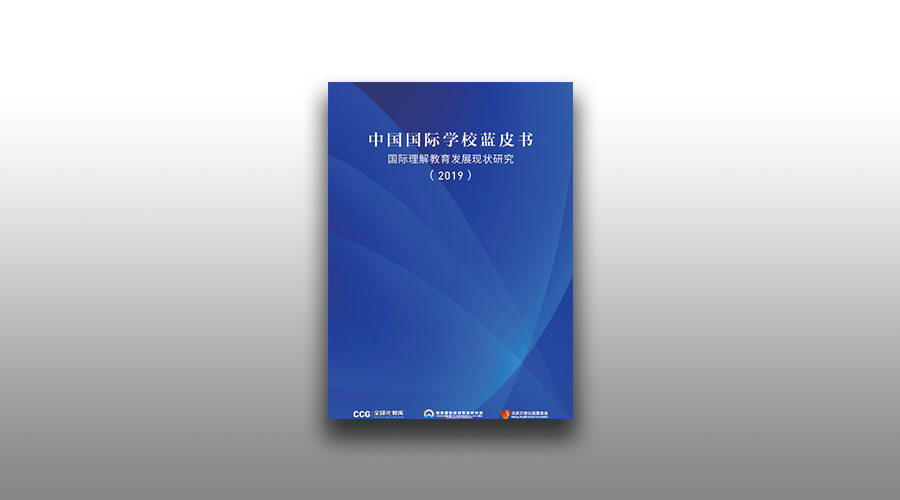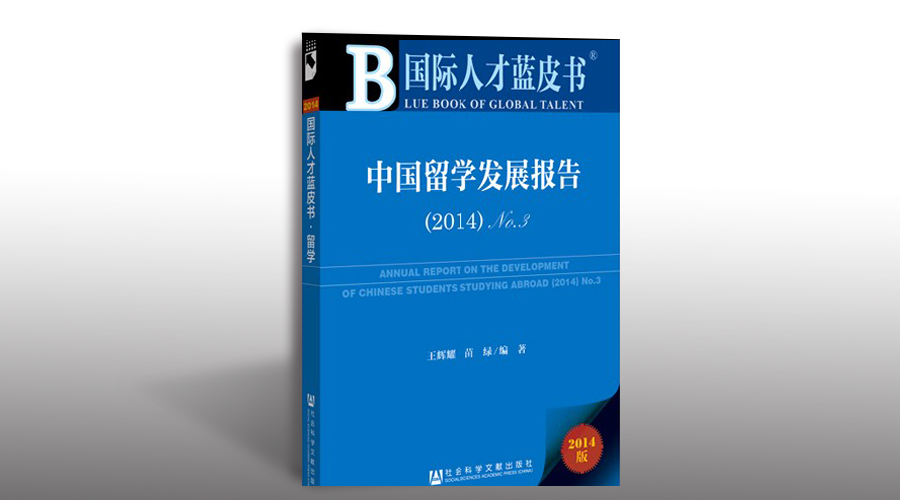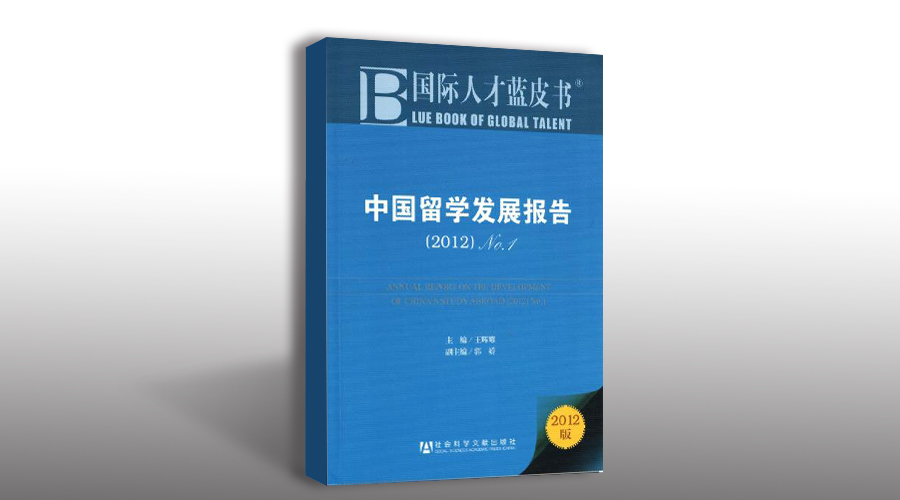CCG new report calls to unleash great potential of China’s international schools along Belt and Road
June 05 , 2019On Dec. 2, 2017, the Center for China and Globalization released the second annual Blue Report on China’s international schools. This year, working together with the Research Institute of International Education for South-south Cooperation, CCG focused the study on the international schools in the Belt and Road countries, including market demand, composition and structure as well as operational strategies and best practice. The goal is to provide policy advice that can help China’s international schools go abroad.
CCG Secretary General Dr. Miao Lu launched the report at the 2nd Annual International Education Forum of the “Integrate to Innovate” in Chengdu. She applauded the remarkable progress China has achieved in international talent cultivation and introduction, but emphasized that it is still far lagged behind developed countries in that regard and needs to significantly increase the number of international talent to meet the demand of China’s economic development.
Dr. Miao noted that beside policy incentives and cultural attractiveness, the establishment of China’s international schools abroad is also an effective way to reach the goal. This report diagnoses the reasons for the slow development of China’s international schools in the countries along the Belt and Road and recommends solutions that can help more of them go abroad.
Report background
Along with China’s growing role in globalization, more and more Chinese companies and institutions are going abroad. In particular, the Belt and Road initiative boosts the number of China-led construction projects along the route and dispatched Chinese staff. However, a realistic problem is that they cannot bring their school-aged children because of lack of local education resource. Compared to Chinese companies, China’s international education are going abroad at a much slower space and cannot fulfill the demand for the fundamental education.
In his working report at the 19th CPC National Congress, President Xi called to further promote the international cooperation along the Belt and Road. And, China’s international schools, especially those owned and run by private sector, is exactly what is being called for. To meet dispatched Chinese staff’s demand for their children education, and to support China’s diplomatic and international development effort, it is time now to expand China’s international schools in the Belt and Road countries.
Report summary
The report is composed of five parts, which are 1) demand for China’s international schools in the Belt and Road countries; 2) strategies and best practice of major developed countries in establishing international schools abroad, such as the United States, Canada and UK; 3) analysis of international school market structure and operation in the Belt and Road countries; 4) survey research on target market of international schools in the Belt and Road countries, including customers’ expectation, preference and concern; 5) recommendation for China’s international schools to seek global expansion, in terms of market risk evaluation, cross-border promotion, diversified education methods and teaching faculty capacity building, and advice on government policy support such as improving supervision and certifying systems.
Report highlights
- There is a great demand for China’s international schools in the Belt and Road countries
According to the report, China’s international schools are concentrated in the more economically developed region such as Beijing, Shanghai, Guangdong, Jiangsu and Zhejiang. Mostly of them are accepted by public, including those owned by private sector. Some are even internationally- acknowledged for their high education quality.
In the recent years, along with the rising number of Chinese companies going abroad, more Chinese staff are dispatched abroad. They are in dire need of local education resource for their school-aged children, so are the third-country citizens. Meanwhile, international schools can also serve as a vehicle to achieve China’s goals in building economic, diplomatic and cultural relations with the Belt and Road countries. Therefore, it is imperative to fill the gap in the demand for high-quality international schools along the Belt and Road and create another platform for China to share its international education strength with the countries along the route.
- China can learn from major developed countries to push its international schools to go broad
The developed countries from the West, especially the United States, Canada, and UK, have long been dominating the international education market for their extensive overseas network and operation experience. China and other emerging economies can benefit a lot from their strategies and practice. The report details the best practice of those countries in international school development overseas, as reference for their Chinese counterpart, such as UK’s international school review system, America’s unique international school funding system, and Canada’s integration of international schools into its national strategies for international education and talent recruitment. All the three countries have rolled out their own international education exporting strategies one by one since 2010, to accelerate domestic economic development and strengthen national competitiveness.
- There is a great potential for China’s international schools in the Belt and Road countries
The report takes a close look at the international education markets in six key Belt and Road countries – Saudi Arabia, Vietnam, UAE, Malaysia, Myanmar and India, which all have close economic and cultural relations with China. Despite the fact that there has been a significant number of international schools in those countries, the demand for the international education with Chinese characteristics remains unmet. In addition, those countries are facing the shortage of high-quality international schools and teaching faculty, which leave sufficient room for China’s international schools to set their foothold in the market.
- There is a strong preference among dispatched Chinese staff in the Belt and Road countries to have their children enrolled in local international schools
Through a survey conducted among dispatched Chinese staff and local overseas Chinese in the Belt and Road countries, the report finds out that only 1/3 of them have their children enrolled in local schools, including 80% in international schools. Among the rest of the 2/3 respondents, 47% of them would like to send their children to local schools but cannot due to the limit of local reality.
The report also identifies the unfamiliarity with local education policies, concern about security situation and lack of confidence in local education resource as the major factors behind dispatched Chinese staff’s decision not to send their children to local schools. On the other hand, those who have chosen or plan to send their children to the international schools in the Belt and Road countries hope that they can experience culture diversity, develop global perspectives, and enhance their career competitiveness.
Report recommendation for schools
- China’s international schools can improve their market risk evaluation, cross-border promotion, education diversity and faculty capacity to seek global expansion
1) strengthen market risk evaluation capability: it should a top priority for China’s international education institutions that intend to establish schools in the Belt and Road countries. On one hand, they should conduct pre-investment evaluation to decide on the suitable markets and optimal business models based on their own strength; meanwhile, they should also closely monitor the operation environment to identify potential risks and effective solution and optimize resource allocation.
2) scale up cross-border promotional effort through new channels: China’s international schools still need to improve their promotion in the targeted markets to ensure the effective delivery of key information and communication with prospect customers.
3) expand sources of students through coordinative efforts to reduce financial burden on student families: over 90% of dispatched Chinese staff earn less than RMB500,000 per year, no matter they work for the Chinese government, state-owned enterprises or privately-owned companies. The tuition fee in the international schools is still a heavy financial burden on most of them. Employing “Internet + education” technology and teaching models, China’s international schools can deliver the education to the Belt and Road countries at a lower cost.
4) make school curriculum open and flexible to meet the demand for education diversity: China’s international schools should create a school curriculum with both national and international characteristics to meet the demand of dispatched Chinese staff and local overseas Chinese. In addition, the curriculum should be customized with different educational objectives to allow the students from different background to leverage their strength and pursue their interest.
5) develop school cultural identities to reduce friction: China’s international schools should promote mainstream cultural value while encouraging cultural diversity and integration, to form the acknowledgement of common value and concept among teachers and students and to foster their cross-cultural understanding and exchange capabilities.
6) strengthen faculty management system and capacity building: the difference between local and foreign teachers and their mobility will lead to the rise of operational cost and fluctuation of education quality. China’s international schools should provide education concept and skill training for their faculty and implement standard evaluation to make sure of their competencies and capabilities.
7) establish evaluation systems that employs internal and external standards: China’s international schools to be established in the Belt and Road countries should set up an internal evaluation system following international standard and a bottom-up reporting system, so that the school management level can adjust policies and strategies accordingly. In addition, they should also involve third-party independent evaluation specialists.
Report recommendation for government
Chinese government should include the deployment of China’s international schools in the Belt and Road countries in its national strategy, and provide supervision and certification services.
- policy and institutional support: the central government can put China’s international schools going abroad under its talent internationalization policy framework, along with introduction of overseas high-level talent and Chinese talent studying abroad, and form a cross-border and cross-agency international education cooperation and coordination institution with the Belt and Road countries to help with the expansion of China’s international schools.
- financial and service support: the support from China’s diplomatic and foreign affairs agencies is crucial to China’s international schools going abroad. They are advised to: 1) collect and share the information about dispatched Chinese staff and their families; 2) establish a foundation for the development of China’s international schools abroad led by the Ministry of Foreign Affairs, and provide financial support to them depending on their specific needs; 3) support the promotional effort of China’s international schools in the Belt and Road countries with the resource of the Chinese embassies and consulates; 4) form a list of Chinese government-recommended international schools that pass evaluation and obtain certification; 5) align the curriculum of China’s international schools abroad with China’s domestic education and school systems and make school credit convertible to ensure the children of dispatched Chinese staff can complete their study after returning home; 6) have the Ministry of Public Safety and Ministry of Foreign Affairs work together to facilitate teachers and students of China’s international schools abroad to process their visa application.
3. certification and supervision: privately-owned international schools have advantage in effective market operation but may not able to guarantee high education quality. Therefore, it is very important to build a supervision and certification system to ensure their quality. The Non-state Education Promotion Law released in September, 2017, stipulates management standards for the market entry, service quality and market exit for international schools, but it is only applicable to the international schools established within China. Taking it as a reference, the Ministry of Education can enforce a non-compulsory international school certification system to evaluate and certify them for the international market.






